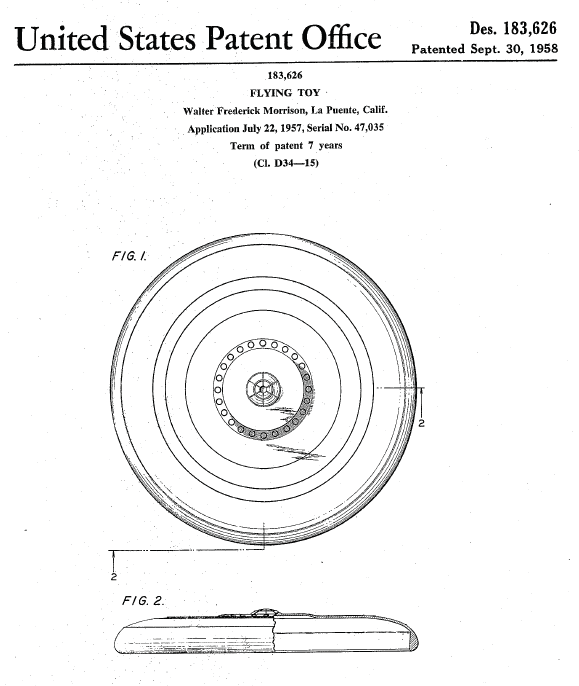Flying Saucer
On January 13, 1957, Wham-O began production of its “Pluto Platters”, the plastic flying dish today called a Frisbee™. Invented by Fred Morrison, the lightweight and elegant airfoil becomes a vehicle of remarkable precision in the hands of a skilled hurler. Inspired by pie pans of the Frisbie Pie Company of Connecticut, this aerodynamically streamlined version has become the projectile of choice in simple one-on-one games of catch, exercising a competitive dog, and versions of football and golf.

The disc’s aerodynamic attributes have also inspired academic studies and learned papers about its drag and lift. Drag is the force that resists the Frisbee™, creating friction as the disc tries to move through the air. The curved shape of the Frisbee™ forces the flow of air above the disc to travel faster than the airflow beneath – low pressure above and higher pressure underneath – pressure difference that creates the lift.
The skilled Frisbee™ player learns how to minimize drag and maximize lift through the use of “launch” force to achieve velocity and the application of spin at a specific angle to achieve direction and stable flight.
This flying saucer idea inspired the self-propelled disc vehicle, the Avro Canada VZ-9 Avrocar, but the project was cancelled when stable flight could not be achieved. So far, the Frisbee™ seems to be in an airfoil class of its own.
B Bondar / Real World Content Advantage